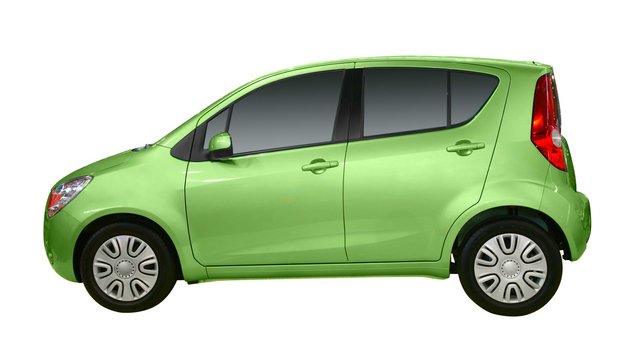What Does Eco Friendly Car Mean: A Comprehensive Guide
Looking for an eco-friendly car? It’s a vehicle that minimizes environmental impact by reducing emissions, using sustainable materials, and maximizing fuel efficiency.
These cars use hybrid engines, electric powertrains, and innovative features to lower their carbon footprint. Learn about their benefits and types in this blog article. Discover sustainable transportation solutions.
What Does Eco-Friendly Car Mean?
An eco-friendly car, also known as a green car, is designed to minimize its impact on the environment. It uses technologies to reduce emissions and improve fuel efficiency.
1. Types of Eco-Friendly Cars
There are several types of eco-friendly cars available in the market today, each with its unique benefits and considerations.
Electric Vehicles (EVs):
Electric vehicles, or EVs, are powered by electricity stored in rechargeable batteries. They produce zero tailpipe emissions and have the potential to significantly reduce greenhouse gas emissions, as long as the electricity used for charging is generated from renewable sources.
EVs are becoming increasingly popular due to advancements in battery technology and improvements in charging infrastructure.
Hybrid Electric Vehicles (HEVs):
Hybrid electric vehicles, or HEVs, combine an internal combustion engine with an electric motor and battery. They rely on both traditional fuel and electricity to power the vehicle, resulting in lower fuel consumption and reduced emissions compared to conventional cars. HEVs are particularly effective in stop-and-go traffic, where the electric motor can provide efficient power.
Plug-in Hybrid Electric Vehicles (PHEVs):
Plug-in hybrid electric vehicles, or PHEVs, are similar to HEVs but with larger batteries that can be recharged by plugging into an external power source.
This allows for extended electric-only driving range, reducing the reliance on gasoline or diesel engines. PHEVs offer the flexibility of using both electricity and traditional fuels.
Fuel Cell Vehicles (FCVs):
Fuel cell vehicles, or FCVs, use hydrogen gas to power an electric motor. These vehicles produce zero emissions, as the only byproduct of the fuel cell system is water vapor.
However, the infrastructure for producing, distributing, and storing hydrogen is still limited, making FCVs less common compared to other types of eco-friendly cars.
2. Benefits of Eco-Friendly Cars:
Choosing an eco-friendly car can have numerous benefits, both for the environment and for car owners themselves.
Environmental Benefits:
– Reduced Carbon Emissions: Eco-friendly cars help reduce greenhouse gas emissions, contributing to the fight against climate change.
– Improved Air Quality: Electric vehicles produce zero tailpipe emissions, leading to cleaner air in populated areas.
– Conservation of Natural Resources: By relying on renewable energy sources or reducing fuel consumption, eco-friendly cars help conserve non-renewable resources such as oil and gas.
Economic Benefits:
– Lower Fuel Costs: Electric vehicles and hybrid cars are generally more fuel-efficient than traditional gasoline-powered vehicles, resulting in lower fuel expenses.
– Government Incentives: Many governments offer tax rebates, grants, or other incentives to encourage the adoption of eco-friendly cars.
– Reduced Maintenance Costs: Electric vehicles have fewer moving parts compared to traditional combustion engines, resulting in lower maintenance and repair costs over time.
3. Features of Eco-Friendly Cars:
Eco-friendly cars often incorporate various features and technologies that contribute to their environmental performance. These features can vary depending on the type of eco-friendly car, but some common elements include:
Aerodynamic Design:
Eco-friendly cars are often designed to reduce drag and improve airflow, which enhances fuel efficiency and reduces energy consumption. Sleek and aerodynamic shapes help these cars slice through the air with minimal resistance.
Lightweight Materials:
Many eco-friendly cars utilize lightweight materials such as aluminum, carbon fiber, or high-strength steel to reduce overall weight.
Lighter vehicles require less energy to move, resulting in improved fuel efficiency and reduced emissions.
Regenerative Braking:
Regenerative braking is a feature commonly found in electric and hybrid vehicles. It allows the vehicle to recover and store energy that would otherwise be lost during braking, utilizing it to recharge the battery or power the electric motor. This feature improves overall energy efficiency.
Energy-Efficient Tires:
Eco-friendly cars often use low rolling resistance tires that reduce friction with the road surface. These tires require less energy to move, resulting in improved fuel efficiency and reduced greenhouse gas emissions.
4. Considerations When Buying an Eco-Friendly Car:
When purchasing an eco-friendly car, it’s important to consider several factors to ensure it meets your specific needs and preferences.
Driving Range:
For electric vehicles, it’s essential to consider the driving range on a full charge. Different models offer different ranges, so it’s important to choose one that aligns with your typical driving habits and needs.
Charging Infrastructure:
For electric or plug-in hybrid vehicles, the availability and accessibility of charging stations in your area should be considered. Having convenient access to charging points at home, work, or public locations is crucial for a seamless ownership experience.
Total Cost of Ownership:
While eco-friendly cars may have higher upfront costs compared to conventional vehicles, it’s important to consider long-term savings in terms of fuel costs, maintenance, and possible government incentives. Evaluating the total cost of ownership is essential for making an informed decision.
Resale Value:
Considering the resale value of an eco-friendly car is important, especially as technology and consumer preferences continue to evolve.
Checking historical data or consulting with experts can provide insights into how well a particular model retains its value over time.
5. The Future of Eco-Friendly Cars:
As environmental concerns continue to grow, the development and adoption of eco-friendly cars are expected to accelerate. Here are some notable trends and advancements shaping the future of eco-friendly cars:
Advancements in Battery Technology:
Improvements in battery technology are leading to enhanced energy storage capabilities, longer driving ranges, and faster charging times for electric vehicles. This, in turn, will increase their appeal to a wider range of consumers.
Expansion of Charging Infrastructure:
Governments, private companies, and other stakeholders are actively working to expand the charging infrastructure for electric and plug-in hybrid vehicles.
The availability of fast-charging stations and an extensive network of charging points will help alleviate range anxiety and promote wider adoption.
Introduction of Hydrogen Fuel Cell Technology:
Fuel cell vehicles powered by hydrogen show great promise as a zero-emission alternative. Ongoing research and development of hydrogen production, storage, and distribution technologies will play a significant role in the increased adoption of fuel cell vehicles.
Integration of Renewable Energy Sources
The integration of eco-friendly cars with renewable energy sources, such as solar or wind power, presents an opportunity to further reduce carbon emissions and reliance on non-renewable energy generation.
What Does It Mean If A Car Is Eco?
Faqs for Eco Friendly Car:
An eco-friendly car refers to a vehicle that emits fewer pollutants and has a reduced impact on the environment compared to traditional gasoline or diesel-powered cars.
These cars are designed to be more fuel-efficient, using technologies such as hybrid, electric, or hydrogen fuel cell systems.
By reducing emissions and fuel consumption, eco-friendly cars help mitigate air pollution, combat climate change, and promote sustainability in the transportation sector.
Eco-friendly cars help the environment in several ways. Firstly, they produce fewer emissions, such as carbon dioxide, nitrogen oxides, and particulate matter, which contribute to air pollution and global warming.
Secondly, these cars are often more fuel-efficient, requiring less gasoline or diesel, thereby reducing our dependence on fossil fuels and their associated environmental impacts.
Finally, eco-friendly cars promote the development and adoption of cleaner and renewable energy sources, such as electricity and hydrogen, which further contribute to a greener and more sustainable future.
There are several types of eco-friendly cars available in the market. Hybrid cars combine an internal combustion engine with an electric motor, allowing for improved fuel efficiency and reduced emissions.
Electric cars run solely on electricity and produce zero tailpipe emissions. Plug-in hybrid cars also have both an electric motor and an internal combustion engine, but they can be connected to an external power source for recharging.
Lastly, hydrogen fuel cell cars use hydrogen gas to generate electricity, emitting only water vapor as a byproduct.
While eco-friendly cars may have a higher upfront cost compared to conventional vehicles, they can be cost-effective in the long run.
Firstly, they generally have lower fuel and maintenance costs. For example, electric cars have significantly lower fuel expenses, as electricity is typically cheaper than gasoline.
Secondly, governments often provide incentives, such as tax credits or subsidies, to encourage the adoption of eco-friendly cars, reducing their initial cost.
Additionally, as technology advances and economies of scale improve, the prices of eco-friendly cars are expected to become more affordable.
When looking for an eco-friendly car, consider factors such as fuel efficiency, emissions, and energy source. Look for vehicles with high mileage per gallon (MPG) or electric cars with a longer driving range.
Check the emissions rating, focusing on lower greenhouse gas and pollutant emissions. Research the different energy sources, such as hybrid, electric, or hydrogen, and determine which aligns best with your needs and local infrastructure.
It’s also helpful to read reviews, compare models, and consult with experts or dealerships to make an informed decision.
Final Thoughts
Eco-friendly cars minimize environmental impact by using alternative fuels or improving fuel efficiency. They reduce emissions and pollutants through features like hybrid or electric engines, regenerative braking, and lightweight materials. Using these cars reduces carbon footprint and supports a sustainable future.


